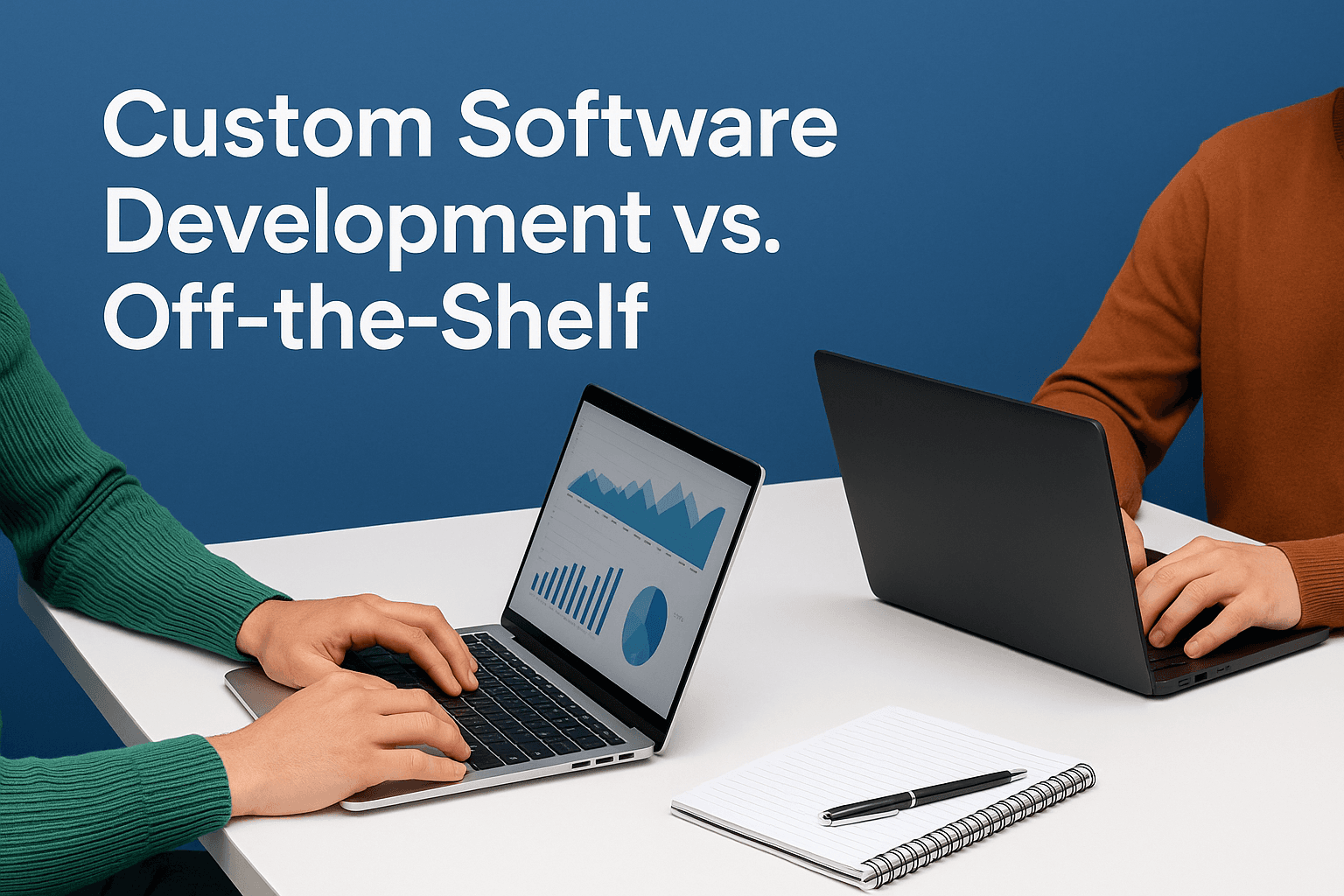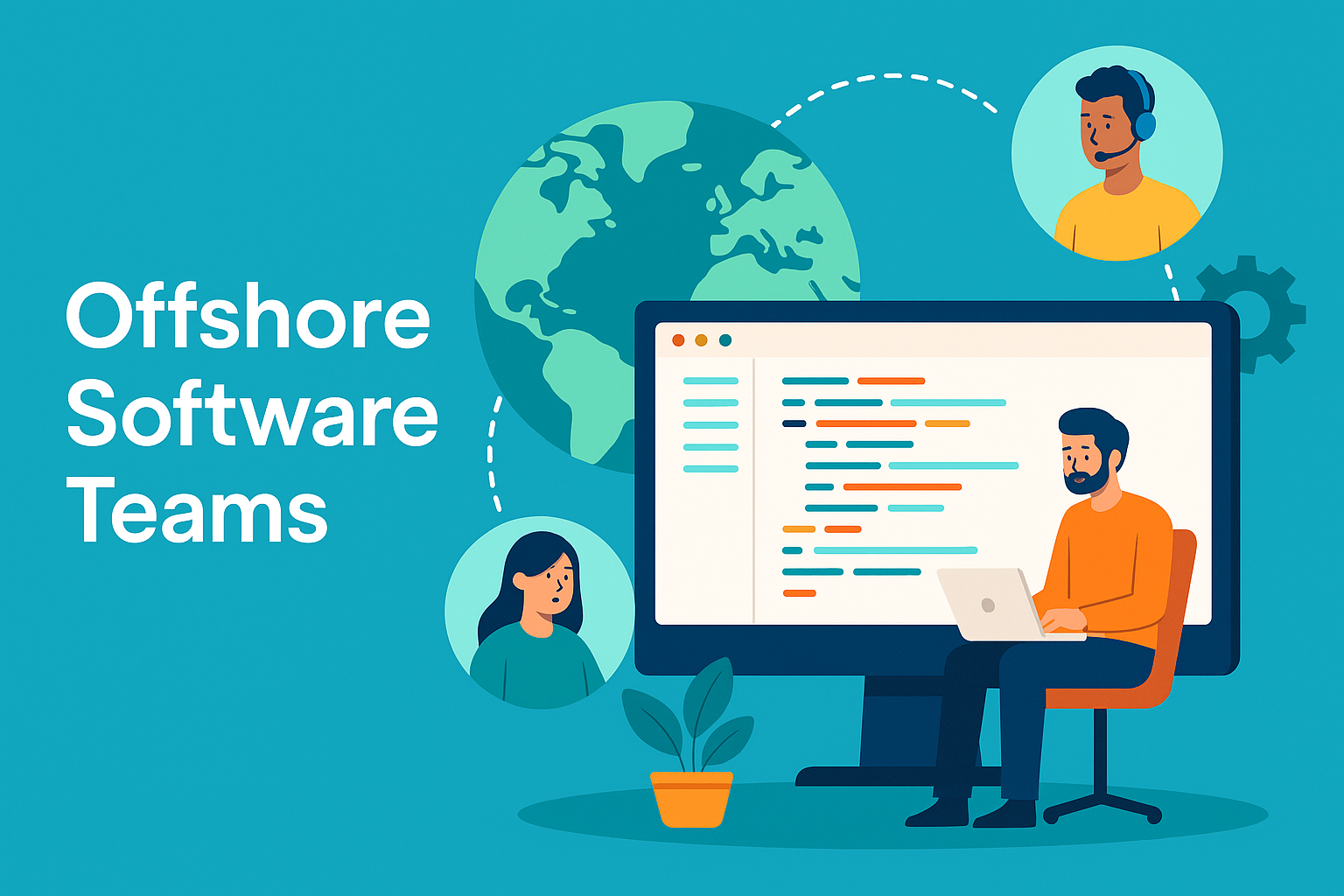Custom Software Development vs. Off-the-Shelf: What’s Right for You?

Introduction
In today’s digital-first environment, choosing the right software can have a long-term impact on how your business grows, adapts, and competes. One of the most common strategic decisions companies face is whether to invest in custom software development or adopt an off-the-shelf solution.
Each option has its advantages depending on business goals, operational complexity, and growth plans. This blog helps you understand the pros and cons of both approaches to make an informed decision.
What Is Off-the-Shelf Software?
Off-the-shelf software refers to ready-made applications designed to serve a wide range of businesses or industries. These solutions come with predefined features, standard interfaces, and fixed pricing models.
Popular examples include:
- CRM systems like HubSpot
- Accounting software like QuickBooks
- Project management tools like Trello
What Is Custom Software Development?
Custom software development involves building software tailored to your specific business requirements. It’s designed from the ground up to match your workflows, processes, and user needs.
This approach is ideal when:
- You have unique operational requirements
- Existing software doesn’t offer the flexibility you need
- You want full control over the roadmap and features
Key Differences Between Custom and Off-the-Shelf Software
Features | Custom Software | Off-the-Shelf Software |
|---|---|---|
Flexibility | Fully customizable | Limited to built-in features |
Cost | Higher upfront investment | Lower initial cost |
Time to Deploy | Longer (requires development) | Immediate or quick setup |
Scalability | Scales with your business | May require migration later |
Ownership | You own the code and data | Vendor retains ownership |
Maintenance & Updates | You manage enhancements |
When to Choose Off-the-Shelf Software
Off-the-shelf solutions are a good fit if:
- You need to go live quickly
- Budget is limited
- Your needs are standard and well-supported by existing platforms
- You’re testing an idea or MVP and want minimal technical involvement
This approach works well for early-stage businesses or departments looking for quick productivity tools without deep customization.
When to Choose Custom Software Development
Custom software is ideal when:
- Your workflows are complex or industry-specific
- You need to integrate with multiple internal systems
- You want to build a differentiated digital product
- Off-the-shelf tools create operational bottlenecks
- Data privacy and control are top priorities
It allows you to build exactly what your team needs—without compromise or workaround.
Hidden Costs to Consider
Off-the-shelf software may come with hidden limitations:
- Subscription fees that increase with usage
- Integration costs
- Feature gaps that require manual workarounds
Custom development, while requiring more upfront investment, can reduce long-term costs by:
- Automating manual tasks
- Avoiding licensing fees
- Offering better security and control
How Floatinity Helps You Choose and Build Right
At Floatinity, we work closely with startups and enterprises to evaluate the right fit—custom or off-the-shelf. For clients needing tailored software, our team:
- Designs scalable solutions from scratch
- Uses modern tech stacks like MERN for speed and flexibility
- Offers long-term support and enhancements
- Ensures seamless integration with existing tools
If off-the-shelf software fits your current stage, we also help you identify the best tools and integrate them smoothly into your workflow.
Final Thoughts
There’s no one-size-fits-all answer. The choice between custom and off-the-shelf software depends on your goals, team size, processes, and long-term vision.
If you need to move fast and keep costs low, off-the-shelf is a great starting point. If you’re scaling, innovating, or solving complex problems, custom software gives you the edge.
Exploring your options? Get in touch with Floatinity and we’ll help you assess what’s right for your business.
Stay connected for more insights on LinkedIn.


